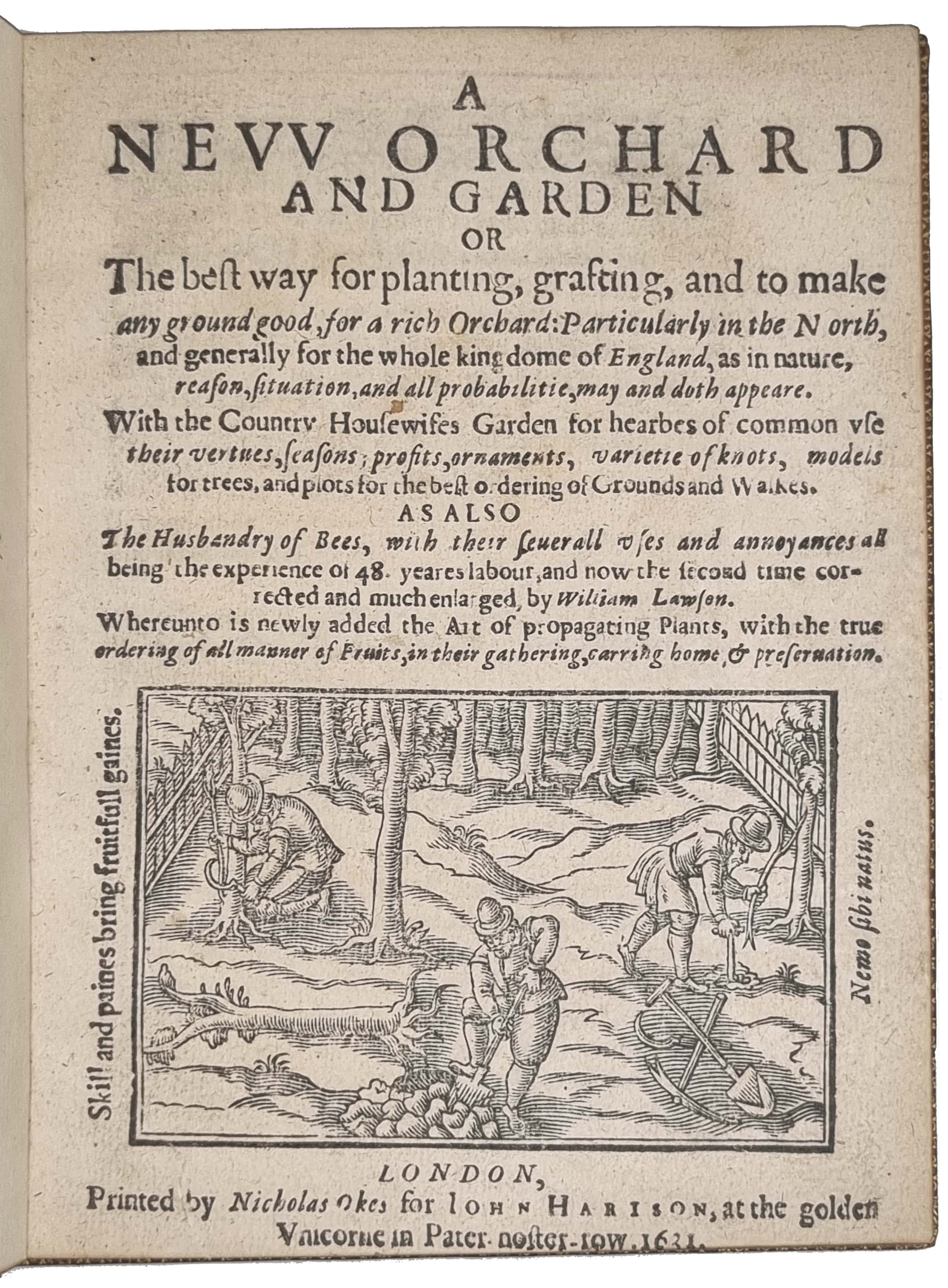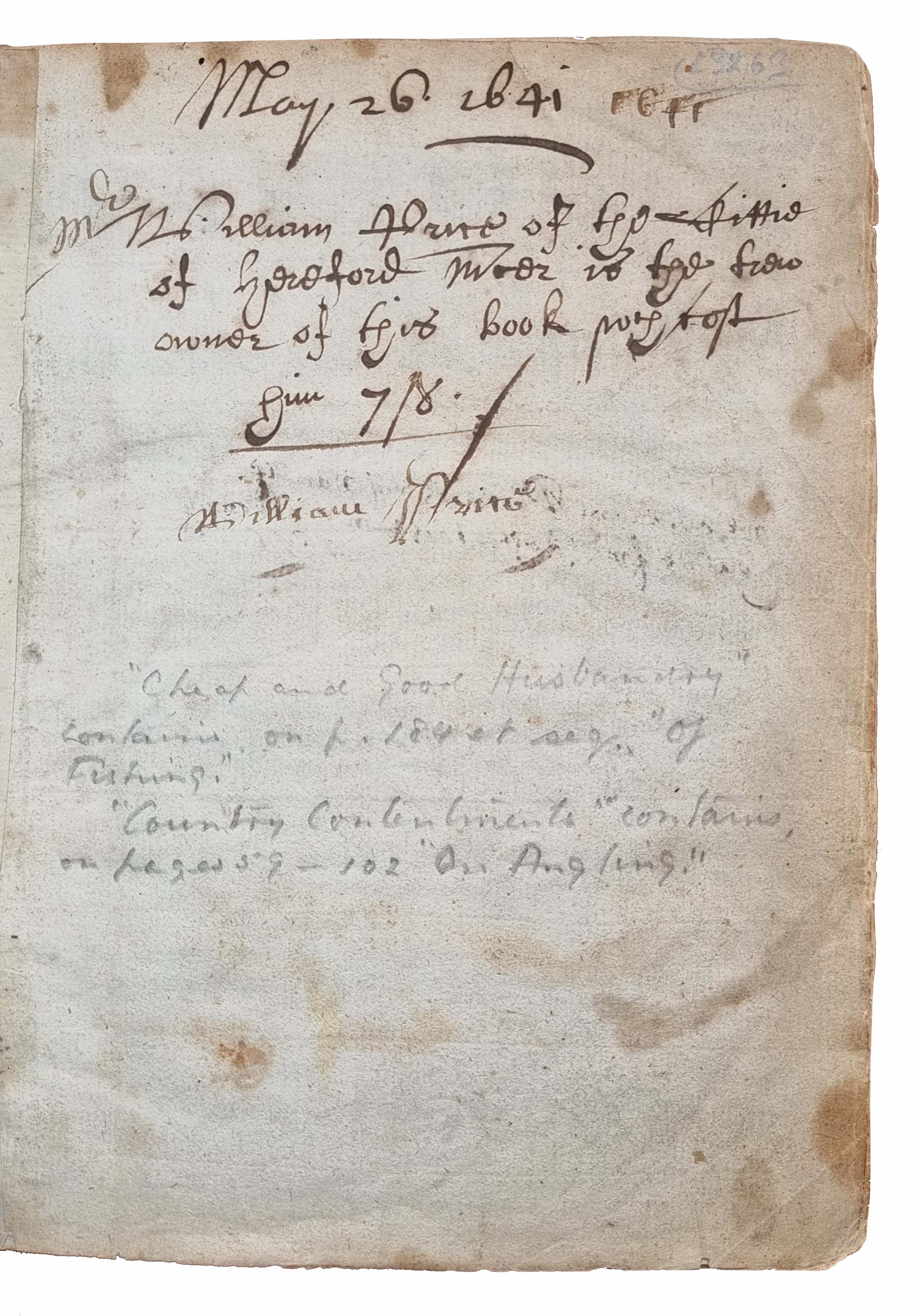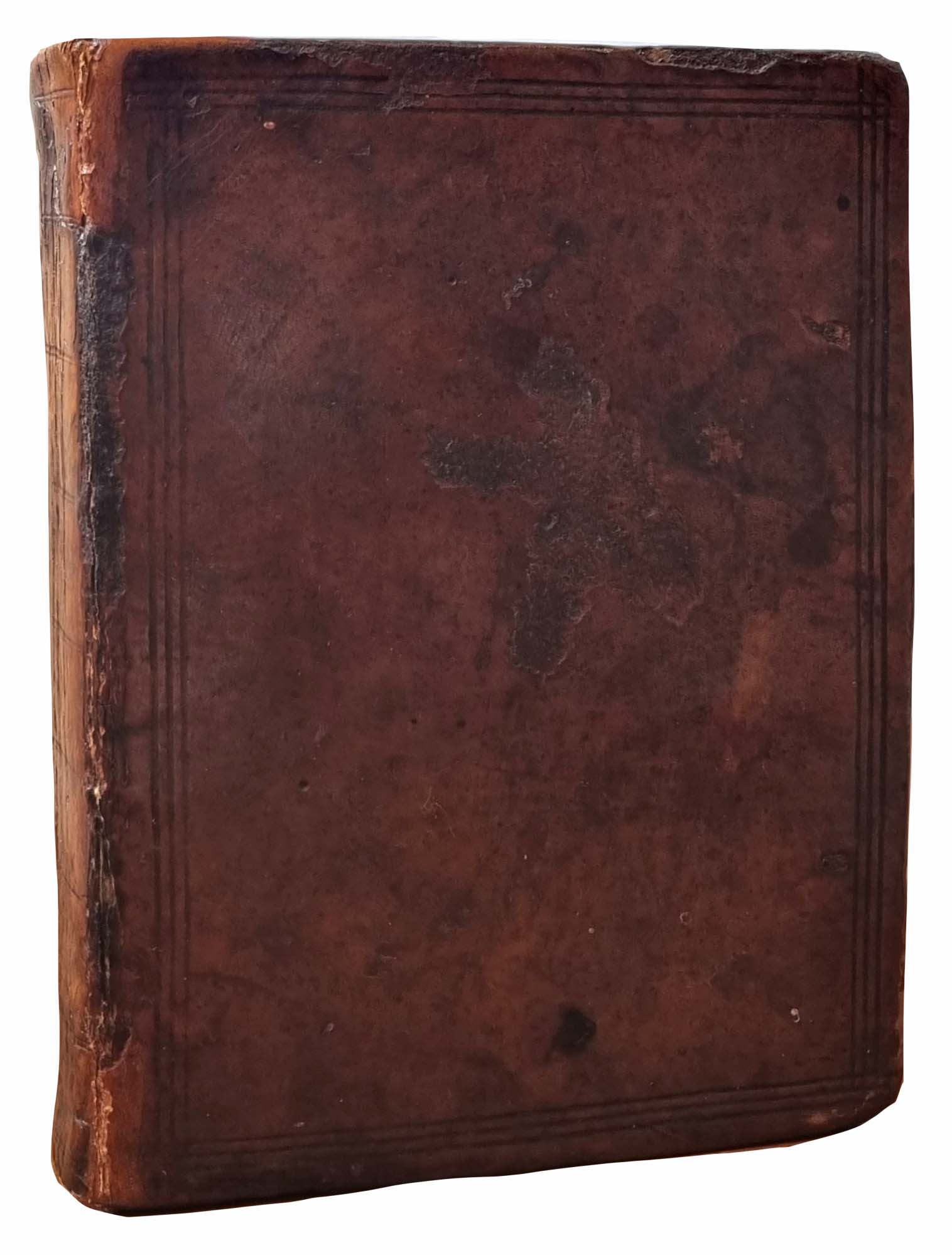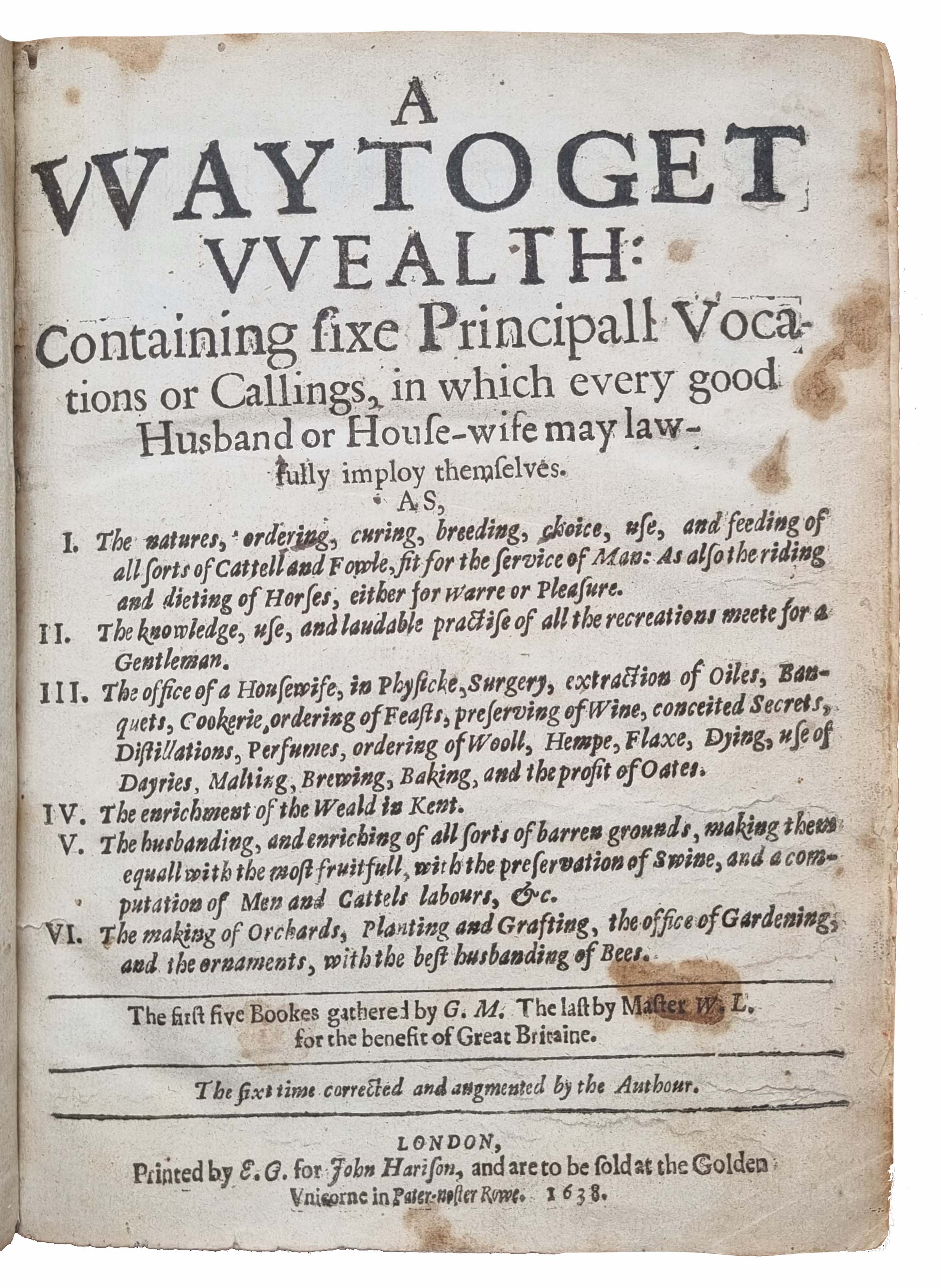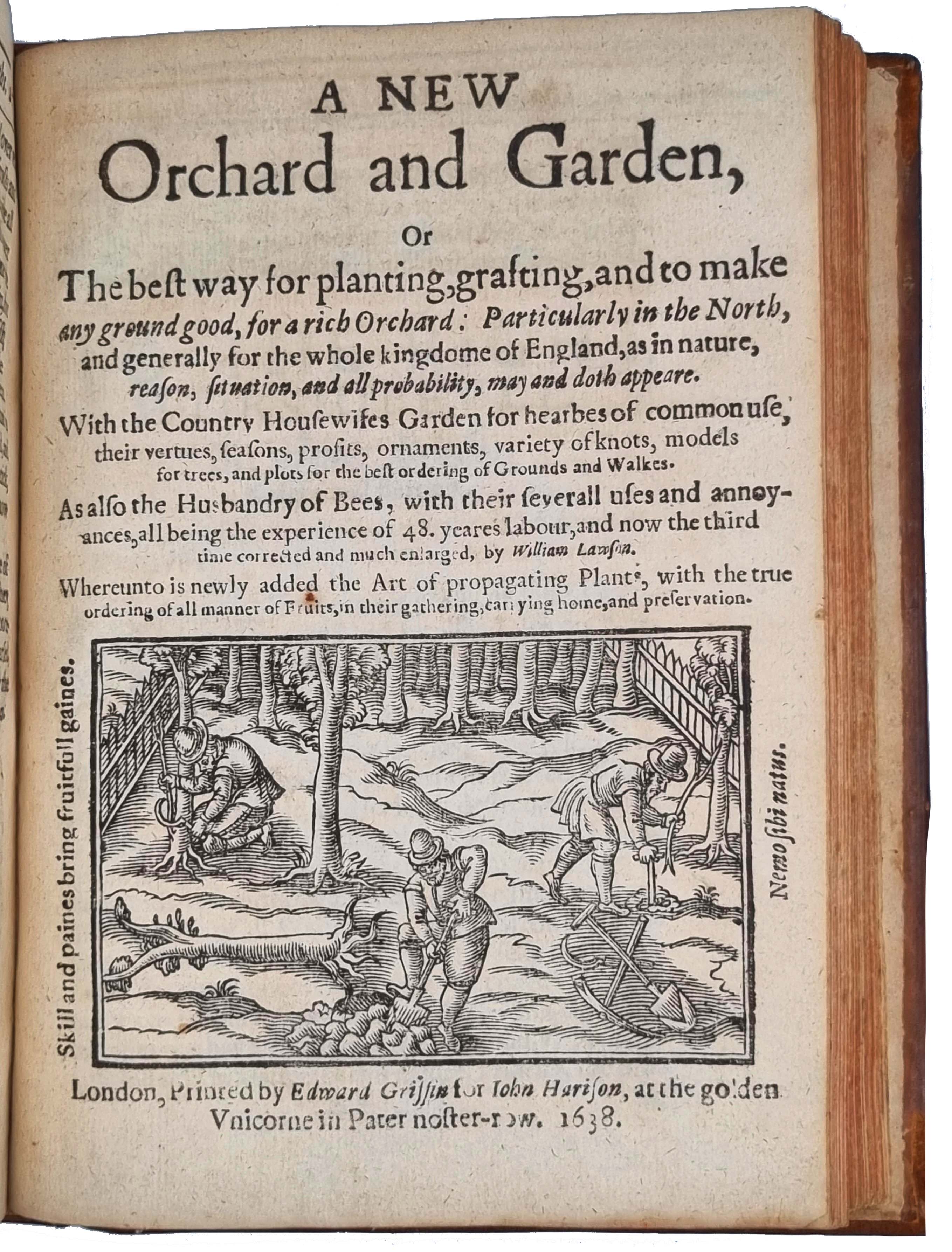MARKHAM, Gervase
A Way To Get Wealth: Containing sixe Principall Vocations or Callings, in which every good Husband or House-wife may lawfully imploy themselves…
London, Printed by E[dward] G[riffin] for John Harison, 1638£4,950.00
4to.six vols in one. pp. [xxviii], 132, 135-188, [ii] [last blank]; [viii], 118, [ii] [without last blank]; [xii], 252 [first blank]; [iv], 24 [bound out of order, quires A and B inverted}; [xii], 32, 23-158; [viii], 133, [i]. “A reissue, with added general title page, of “Cheape and good husbandry”, 6th ed., 1631; “Country contentments”, 5th ed., 1633; “The English house-wife”, 5th ed., 1637; “The inrichment of the weald of Kent .. revised, inlarged, and corrected”, 1636; “Markhams farewell to husbandry”, 4th ed., 1638; all by or edited by Gervaise Markham and “A new orchard and garden”, 3rd ed., 1638, by William Lawson.” ESTC. Roman Letter, some Italic. woodcut illustrations, woodcut initials, head and tail-pieces, typographical ornaments. Contemporary manuscript inscription to front endpaper “Mr. William Priore of the ..of Hereford Meer is the true owner of this book parchased him 7/8 , May 26 1641” autograph repeated directly below, another on verso: “Mr. William Priore is my nam if you me find Restor this sam…, 1646”, bookplate of the Bibliothecca Piscatoria Lynniana on pastedown, Bibliotheca Tiliana below, their discreet inkstamp to verso of title for Cheape and Good Husbandry. Light age yellowing, general title with a few spots, larger at end of ‘Country contentments’, on a few leaves of ‘the English House-wife’, and last four leaves, occasional mark or minor stains to blank margins, the odd thumb mark. Generally a very good and unsophisticated copy, crisp and clean in contemporary calf, covers bordered with a triple blind rule, spine double blind ruled in compartments, restored at head and tail, a little rubbed, a.e.r.
An excellent and rare sammelband of some of Markhams most important works with an edition of Lawson’s ‘A new orchard and garden’ reissued here with an additional general title page by John Harrison, probably to sell unsold copies. It forms an important collection of Markham’s best works on husbandry in the most complete editions. Markham’s Farewell to Husbandry is an important and innovative agricultural work on the preparation and improvement of soils and on arable farming generally. The work also deals with the preservation of grains and pulses, including a section on the best grain to take to sea (which he concludes is rice). It also contains two chapters at the end on the husbandry of cattle for ploughing. “In the pamphlet, ’The inrichment of the weald of Kent’ of 1625, the Author advocated a systematic program for improving the productivity of the ‘unapt’ soils of the region. It was to be based on the regular spreading of Marl (which was commonly found in the Weald) to enrich the ground, and, equally important, the introduction of ley farming to the enclosed fields which have previously been used for either pasture or arable.”Michael Zell ‘Industry in the Countryside: Wealden Society in the Sixteenth Century’
The English housewife contains a huge variety of detailed recipes and information, the majority concerning the preparation of food and drink, with smaller sections on medicine ,household remedies and weaving. Markham starts with a brief description of the ideal temperament of a housewife, before moving on to household remedies “for the curing of those ordinary sickenesses which daily perturb the health of men and Women”. Apart from the usual (C16th) remedies there are many concerning childbirth, and cosmetics, with a very interesting section at the end on how to make various oils, such as oil of lavender and camomile, for such things as “to make smooth hands”. The next and most substantial chapter in on cookery, starting with a description of how to maintain a garden to supply the kitchen. Many of the recipes are for classics of English cookery such as rice and bread pudding, trifle, custards, ‘Gammon of bacon pie’, apple tart, and ‘marmalad’ among many others. The work then moves on to distillation and the making of many “aqua-vitae” and various “waters”, and concludes with a section on the making of perfumes. Then comes a short chapter on the keeping and preserving of wine, including a description of ‘Burdeaux’ and ‘Renish’ wines, and how to choose them and ‘remedy’ them. A short chapter on weaving and dying of wool is followed by chapters on dairy work and the making of a whole variety of cheeses and butter, the making of Malt and bread making and finishes with how to brew beer, ales, cider and perry.
The final work is the beautifully illustrated work on gardening, the only published work of William Lawson, all early editions of which are now rare. “A man of some learning, he evidently read widely on agriculture and gardening, and his two works are also scattered with references to the classics. When he died he willed ‘all my latine books & mie English books of contraversie’ to his son William, which suggests that he may well have owned a relatively substantial library of books for the period.” Julie Gardham – Glasgow University Library Special collections. Within a small compass he provides sound instruction for ‘planting, grafting as to make any ground good, for a rich Orchard’ particularly in the north. The section entitled ‘the County Houswife’s Garden’ is valuable for its attention to the essential role of women in the rural household, as cooks, nurturers of fine flowers and keepers of the herbal medicine cupboard. Also appended, is Simon Harwood’s short treatise on the art of propagating plants and another, which may be by Lawson or Harwood, on how to increase the yield from a wide selection of fruits. A simple practical work written with much charm by an obvious enthusiast and still eminently readable
“Many books on agriculture and gardening were published during the century, but from the historical point of view the most important are those of Markham, because they appeared at an early stage in the new development, were widely read, and full of useful information and sound advice. … His most important work was ‘Markhams farewell to husbandry.’ It dealt fully and expertly not only with ploughing, sowing and harvesting, but with methods such as sanding, lining, marling and manuring, by which fertility of land could be increased.” Anne Wilbraham ‘The Englishman’s Food: Five Centuries of English Diet’.
ESTC S112152; Kress 688; STC 17397. Hull ‘Chaste, silent and Obedient’ pp. 185-6 “The English housewife”.In stock


